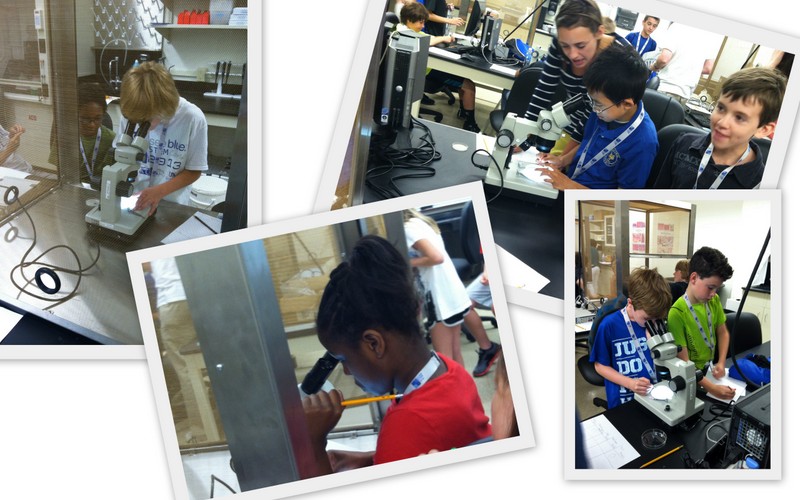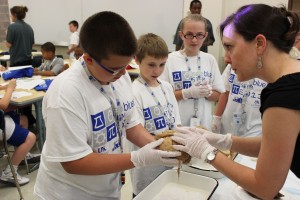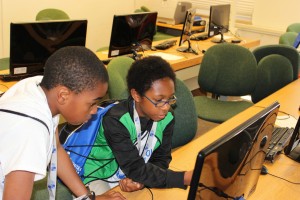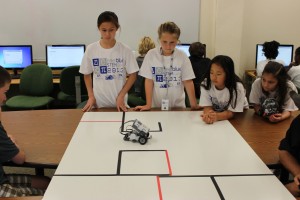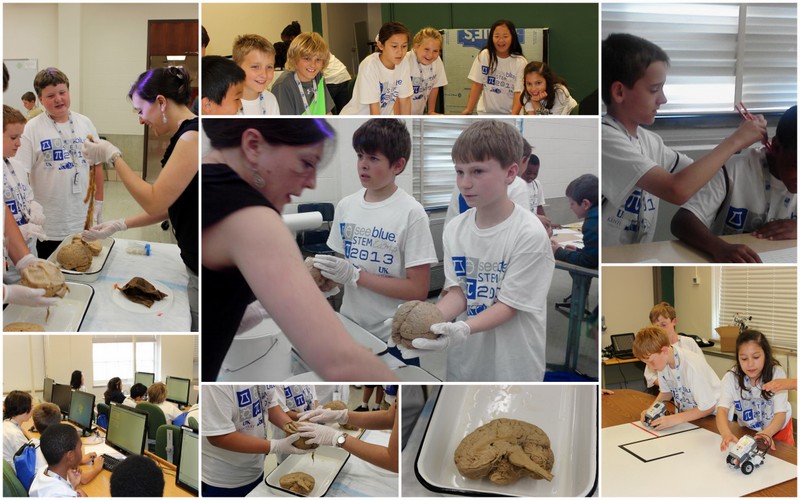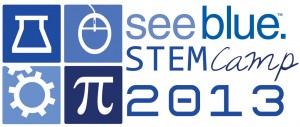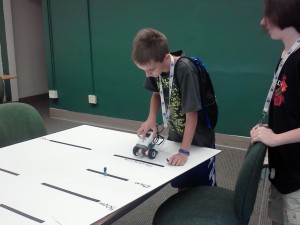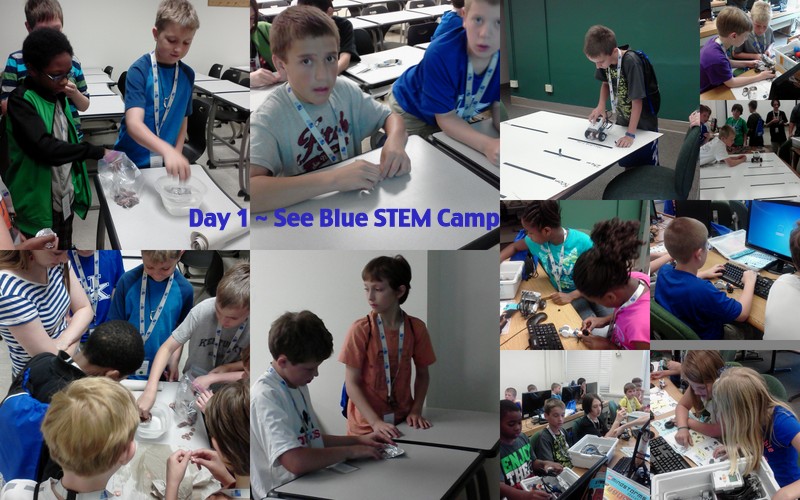Day 3 brought a very nice follow-up to Day 2’s brain activities! The students got to go over to the biology laboratory with Dr. Robin Cooper from the College of Arts and Sciences to explore animal behavior and sensory systems. They experimented with the five senses using fruit flies – looking at how they function in various conditions. The students collected data on mouth movements of the larvae and other data regarding the sense using the lab microscopes. They also completed experiments involving their own neurobiology and the five senses.
In robotics the students have started the Green City Challenge. This started with trying to block the dam of the city. On Thursday they will continue with windmills, solar panels, etc. The kids are really excited about the challenges and have really enjoyed programming and testing their programs – it’s great to see the engineering practices at work!
Did you know that the See Blue STEM Camp not only benefits your student, but students of UK as well? We are very fortunate this year to have graduate students from STEM Education, Engineering, and Biology help out with the presentations. They are learning a lot about working with adolescents as well as sharpening their presentation skills. We also have a few preservice mathematics teachers helping us out this week and next week; they have gained invaluable hands-on experiences in working with middle school students!
Click below for updated pictures

